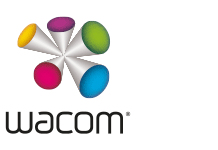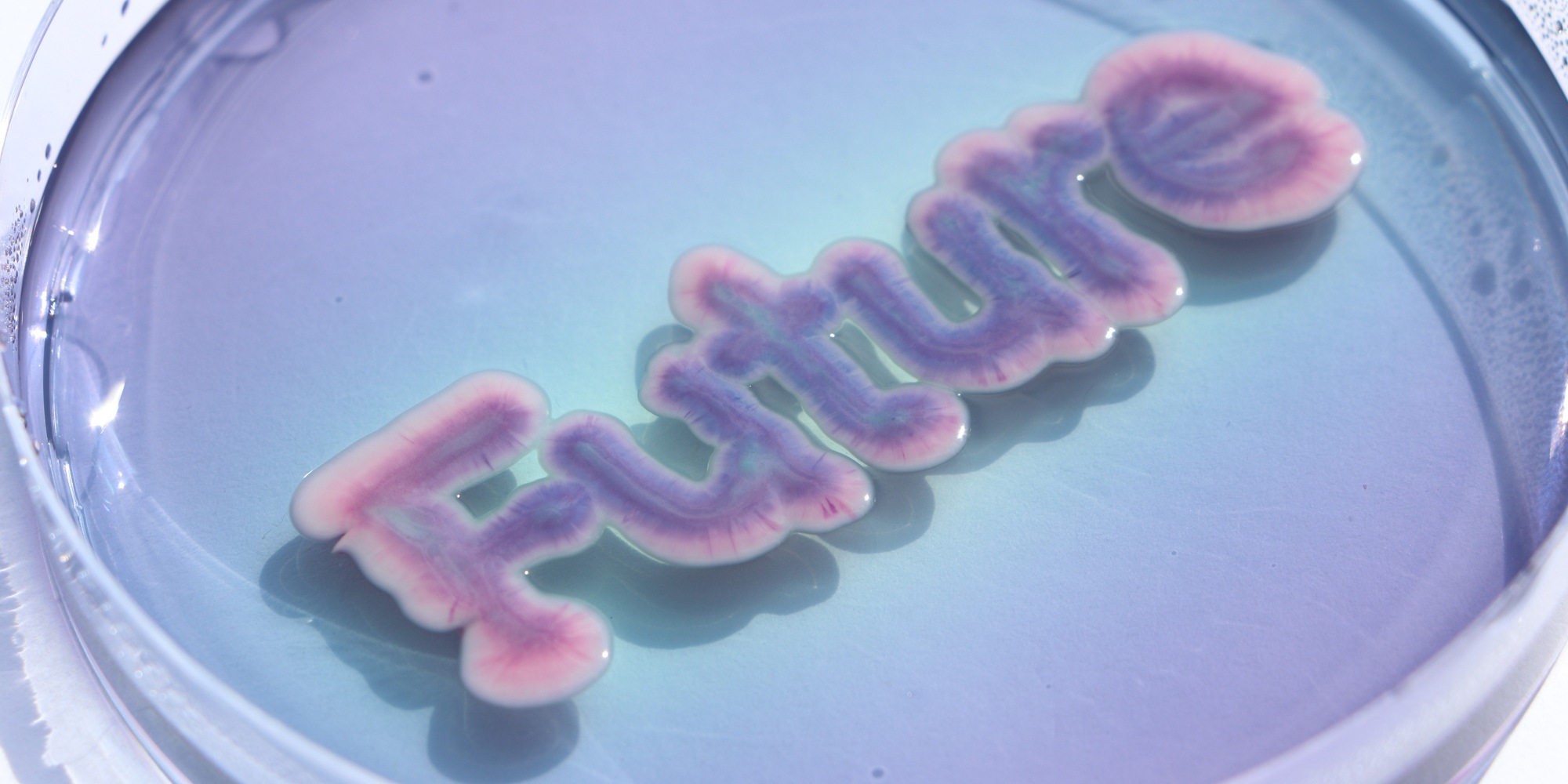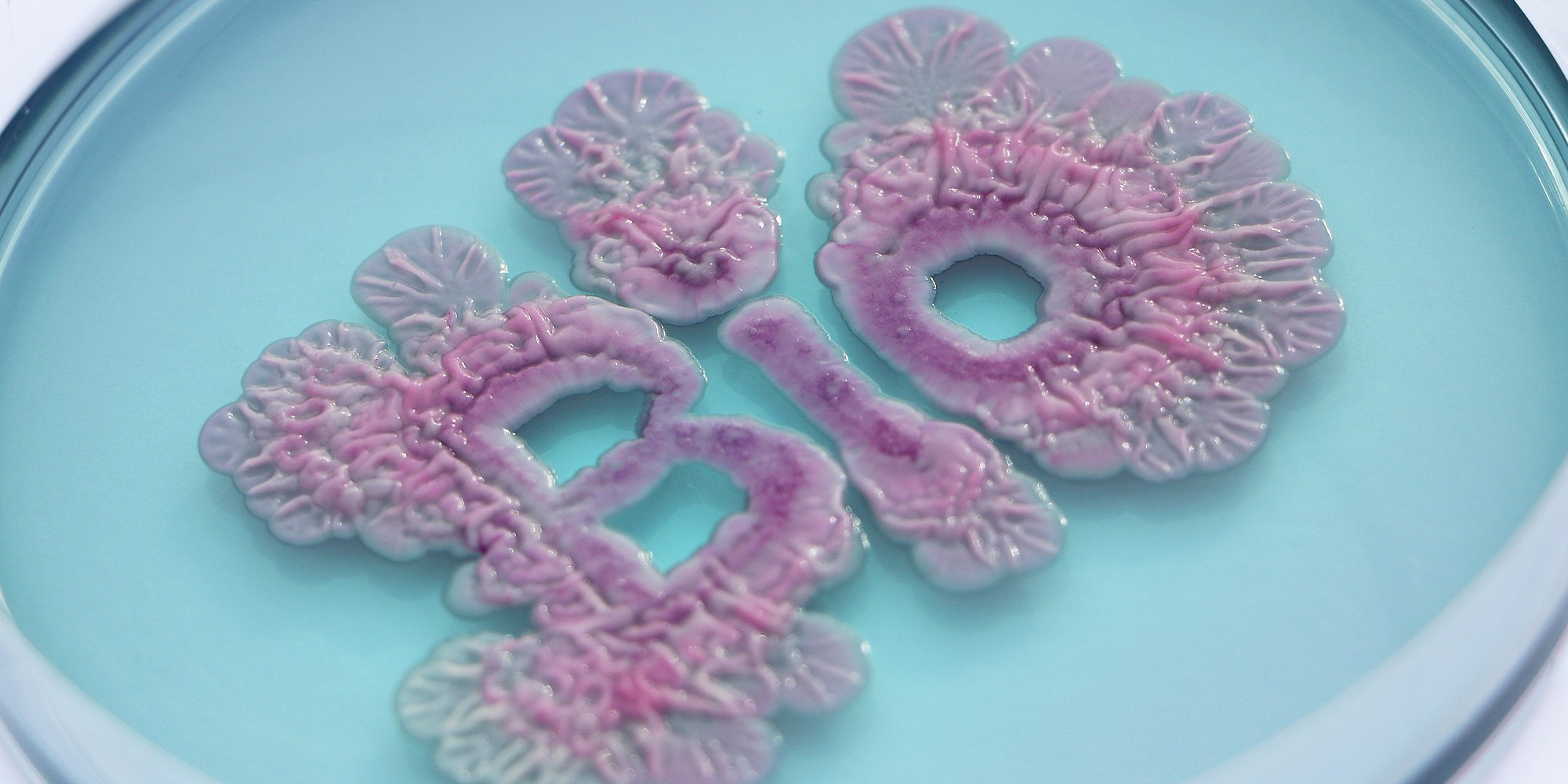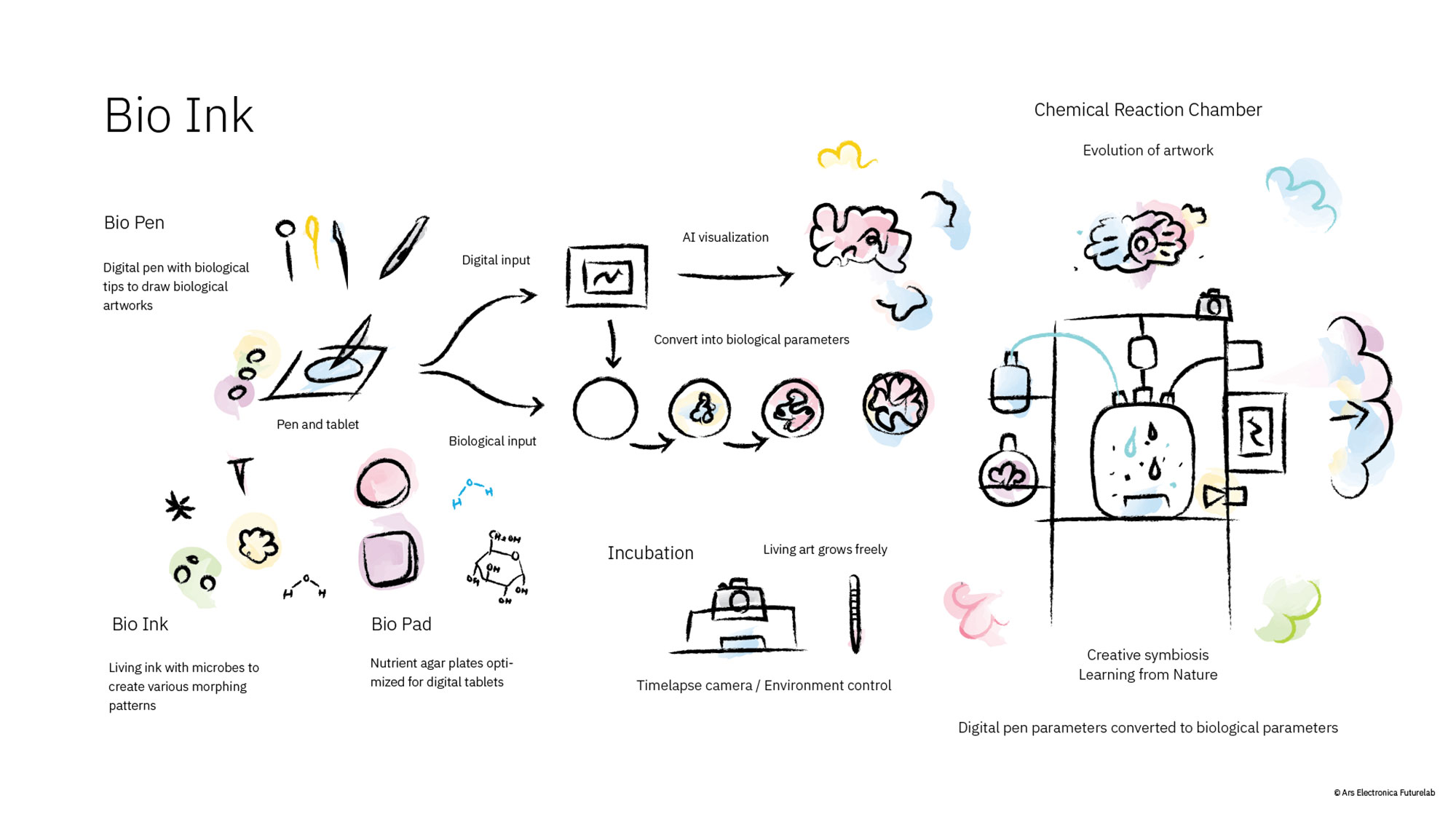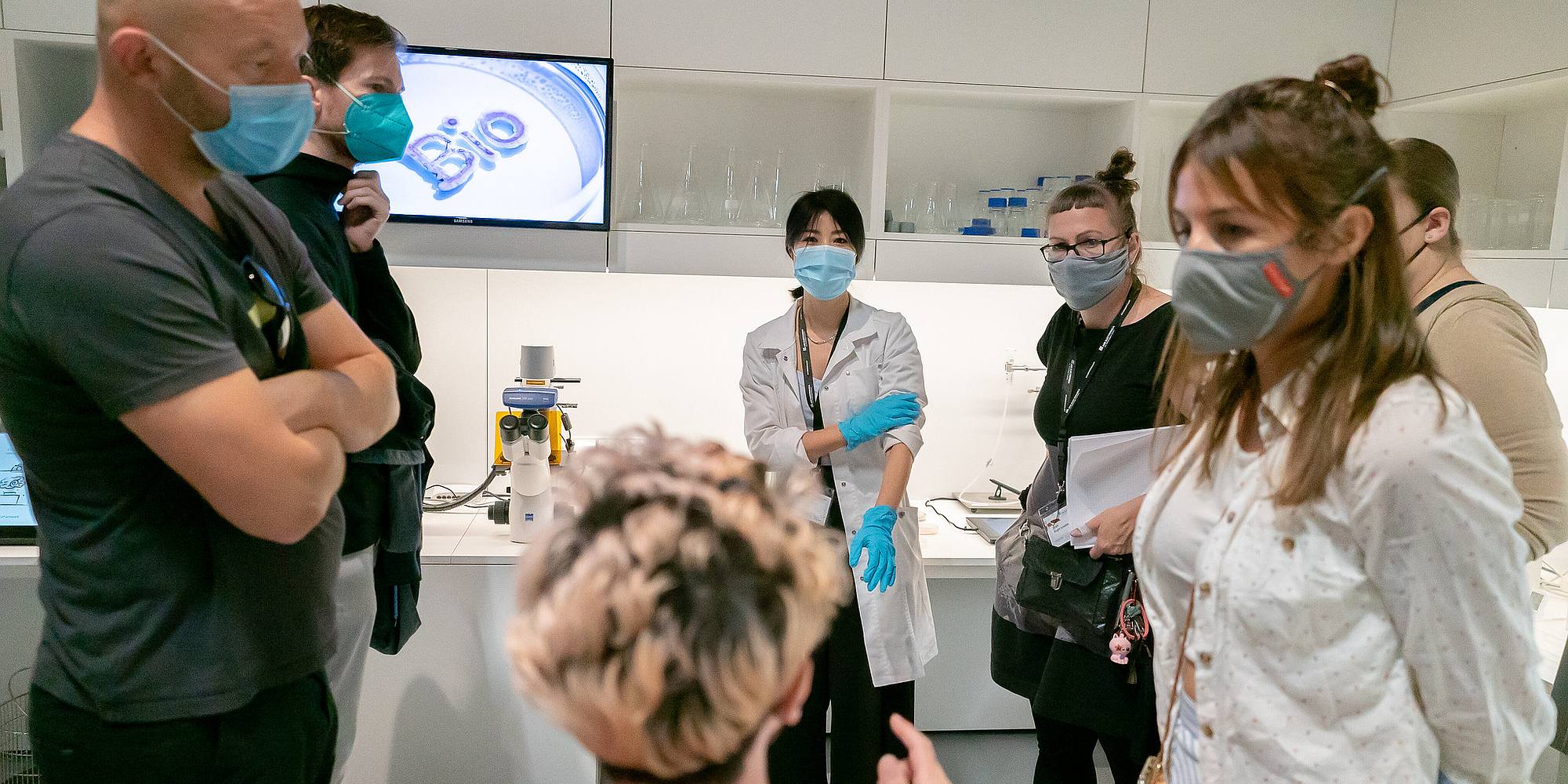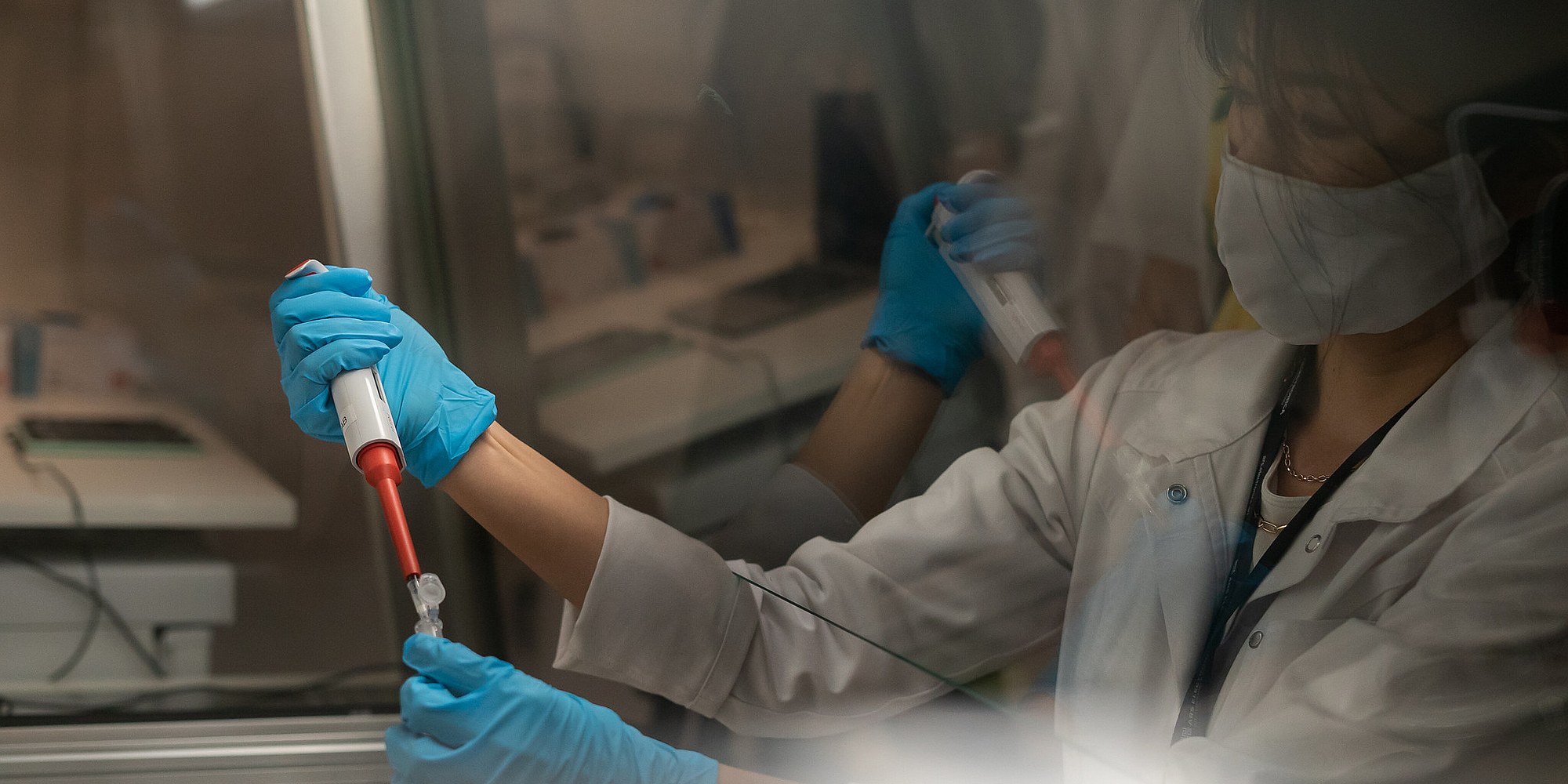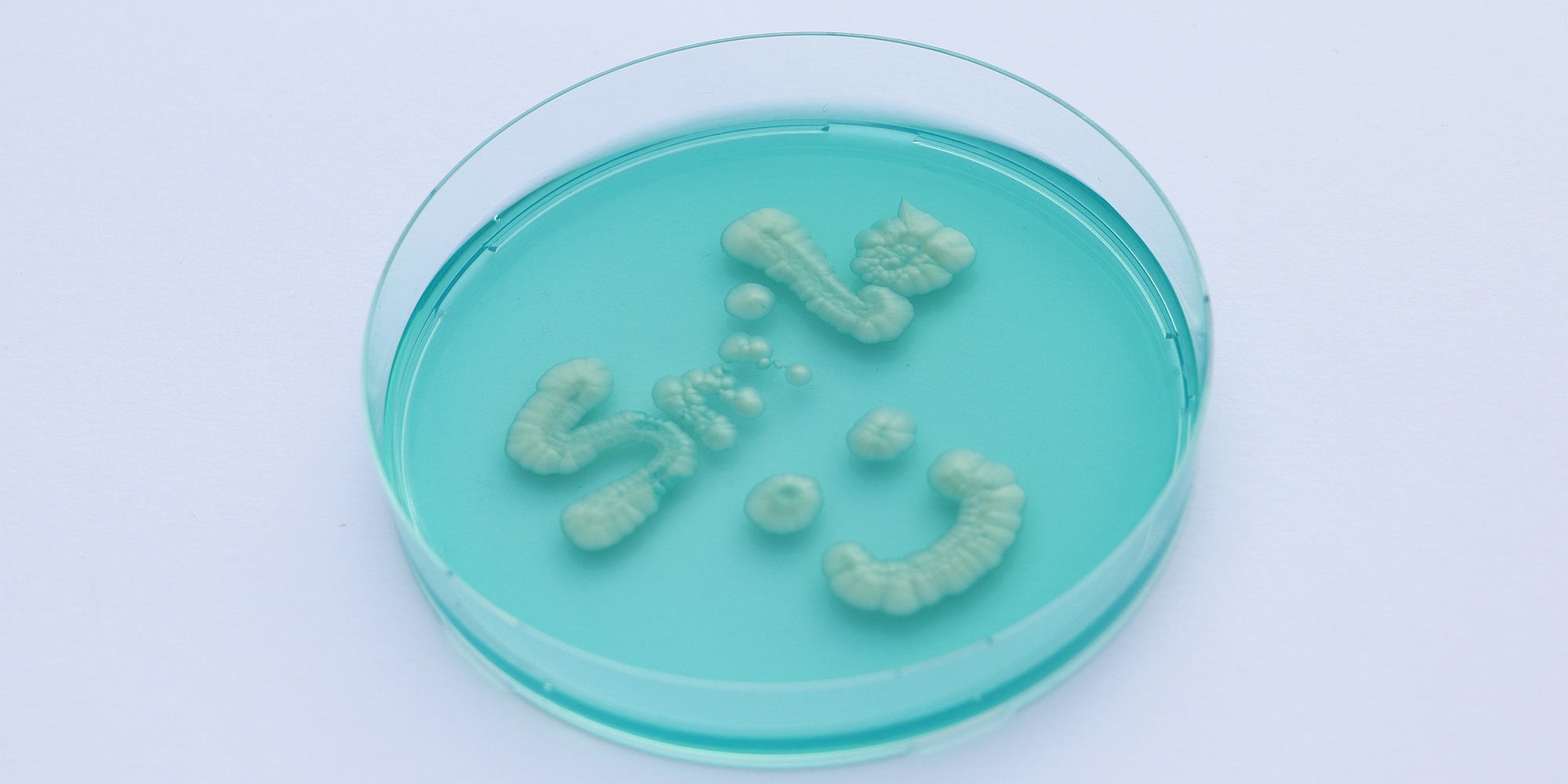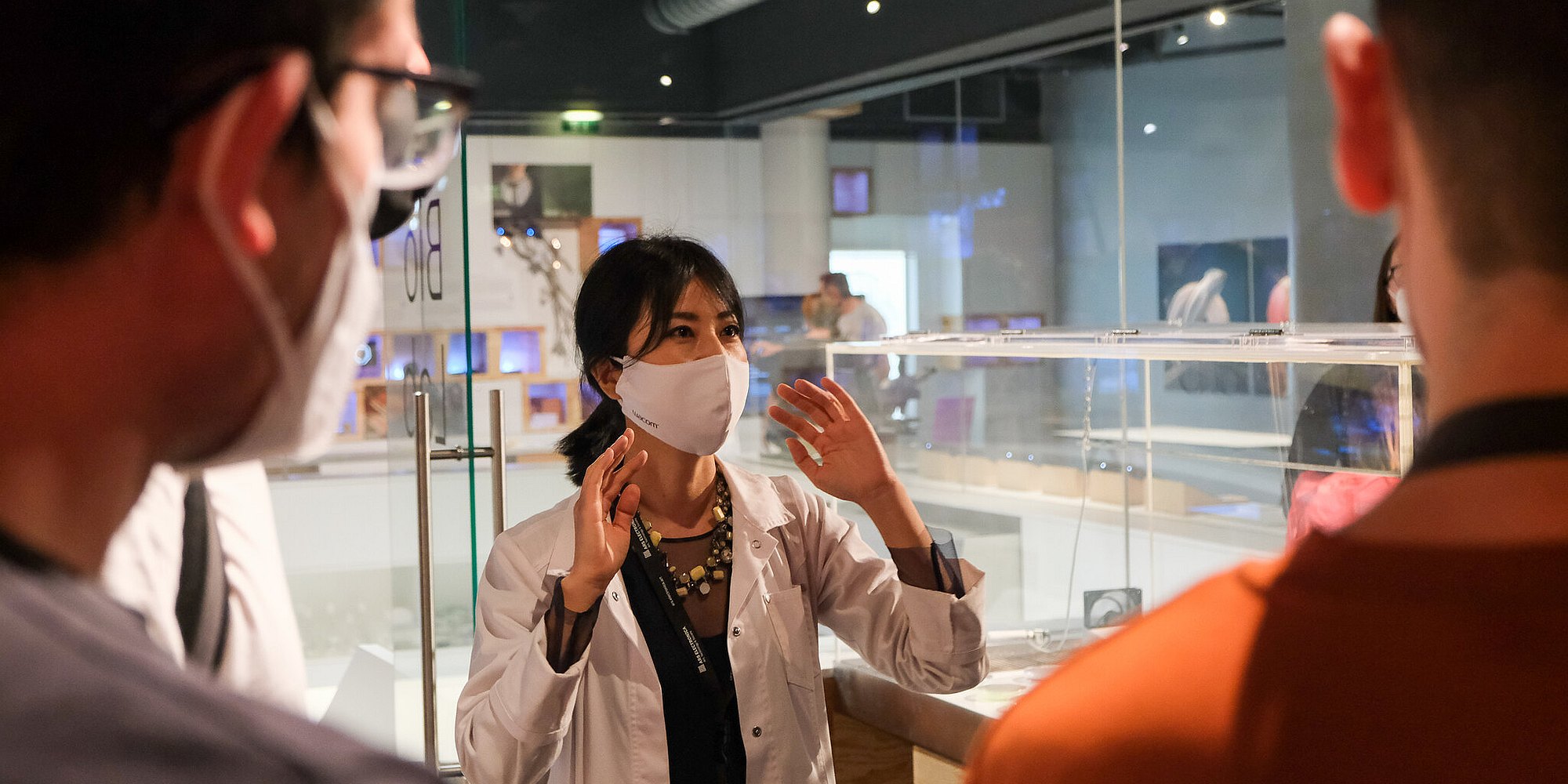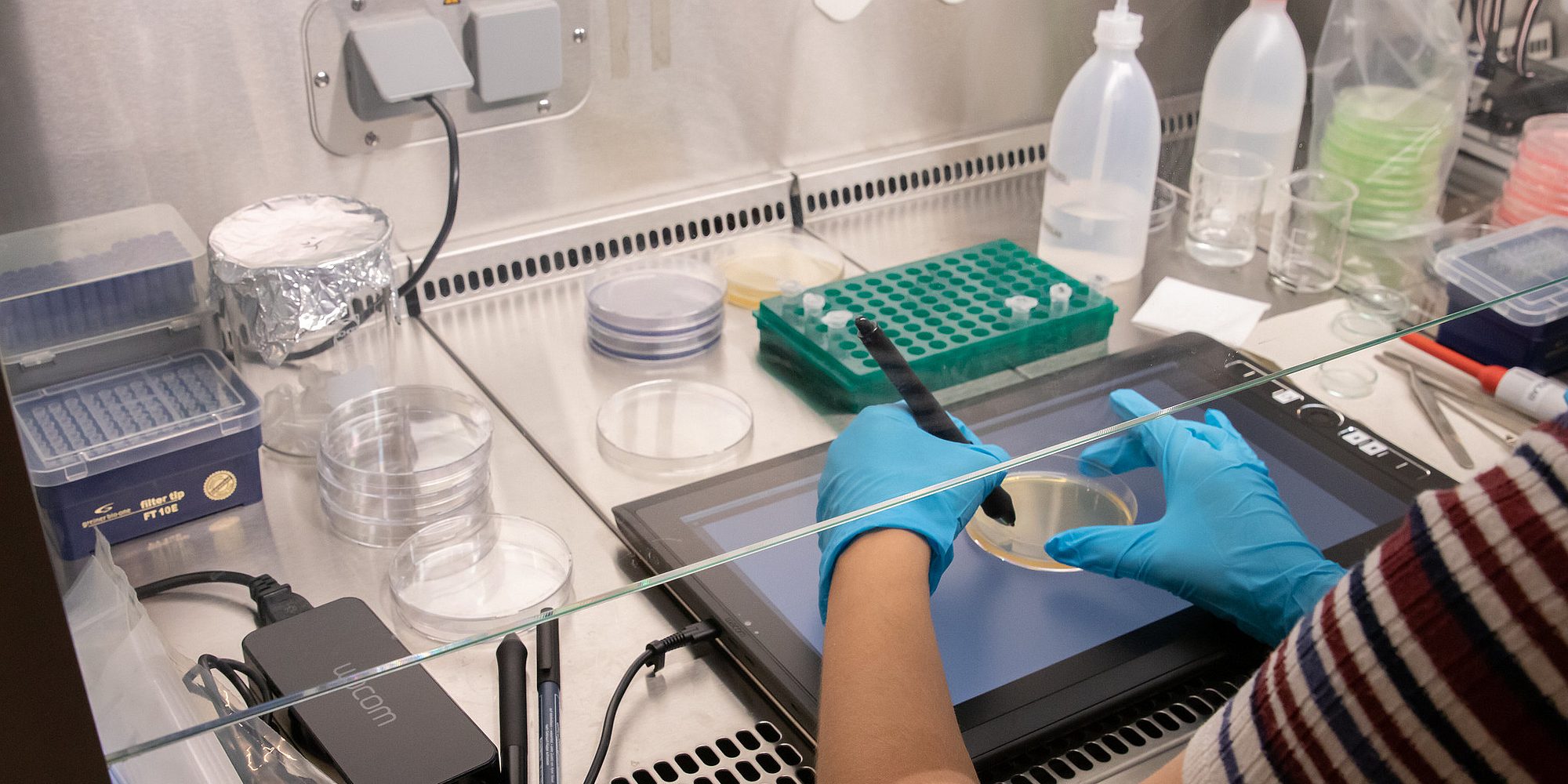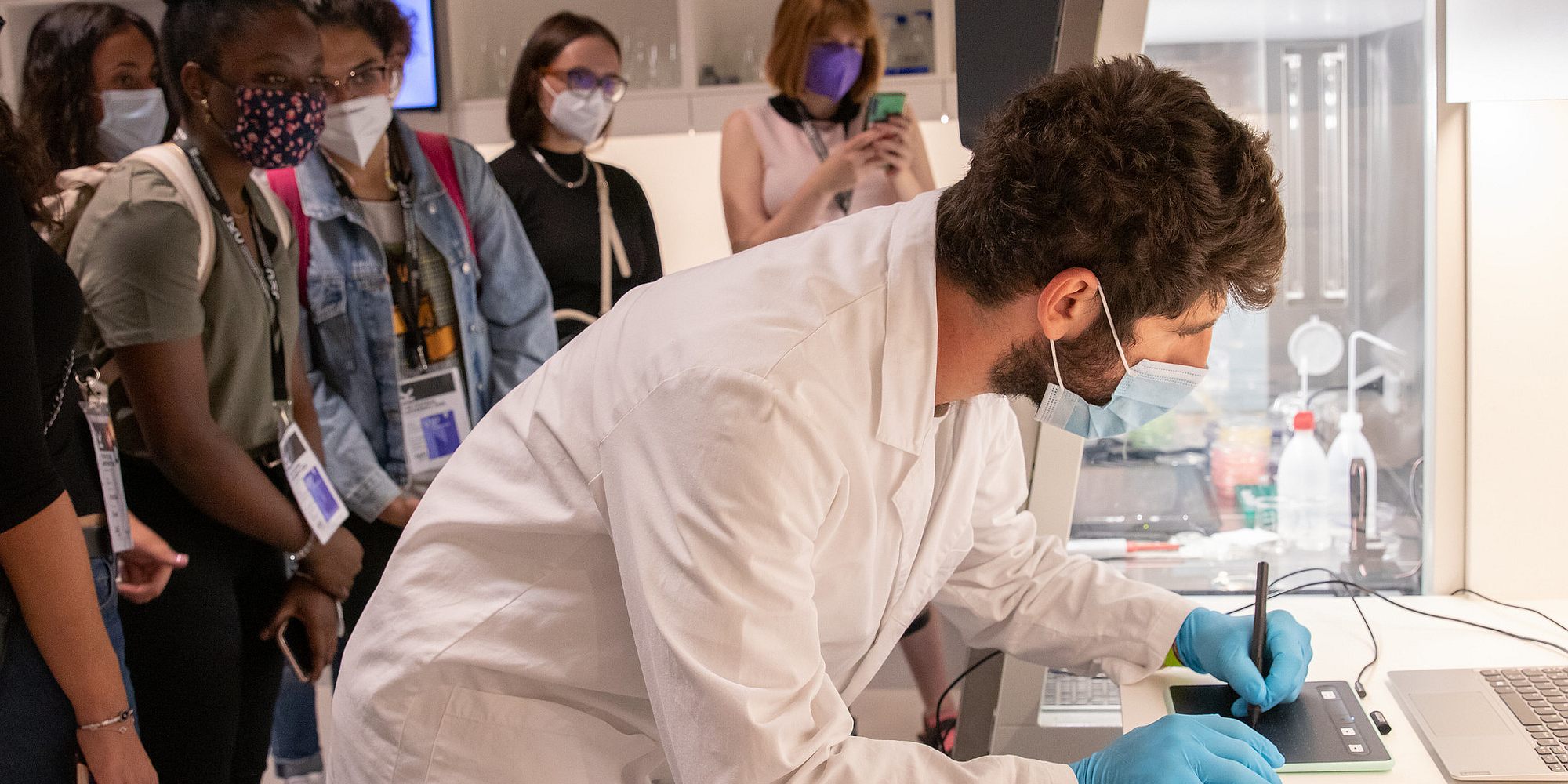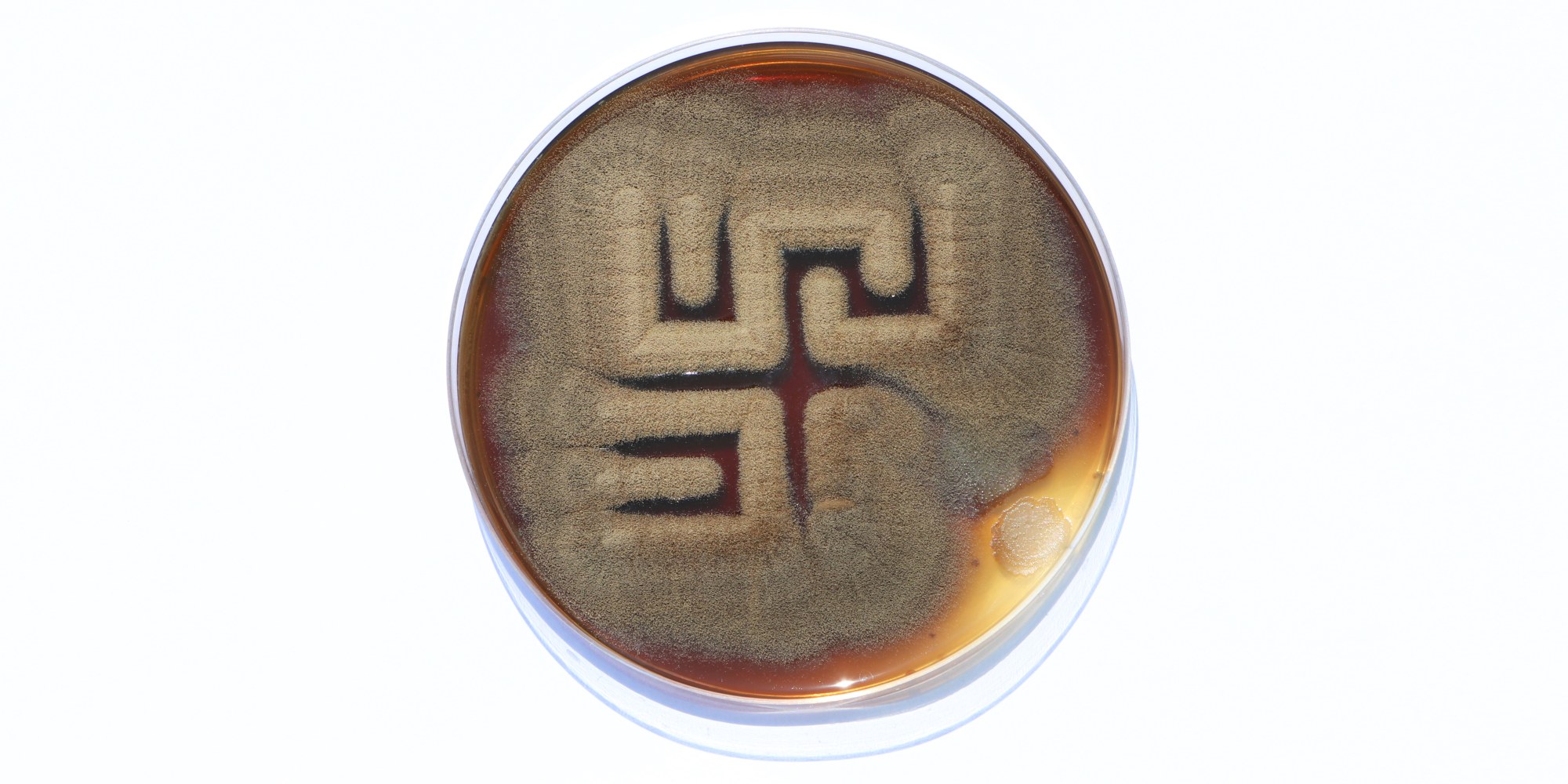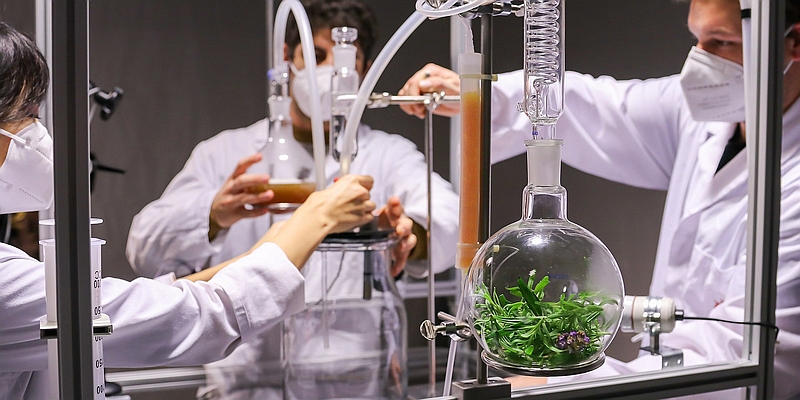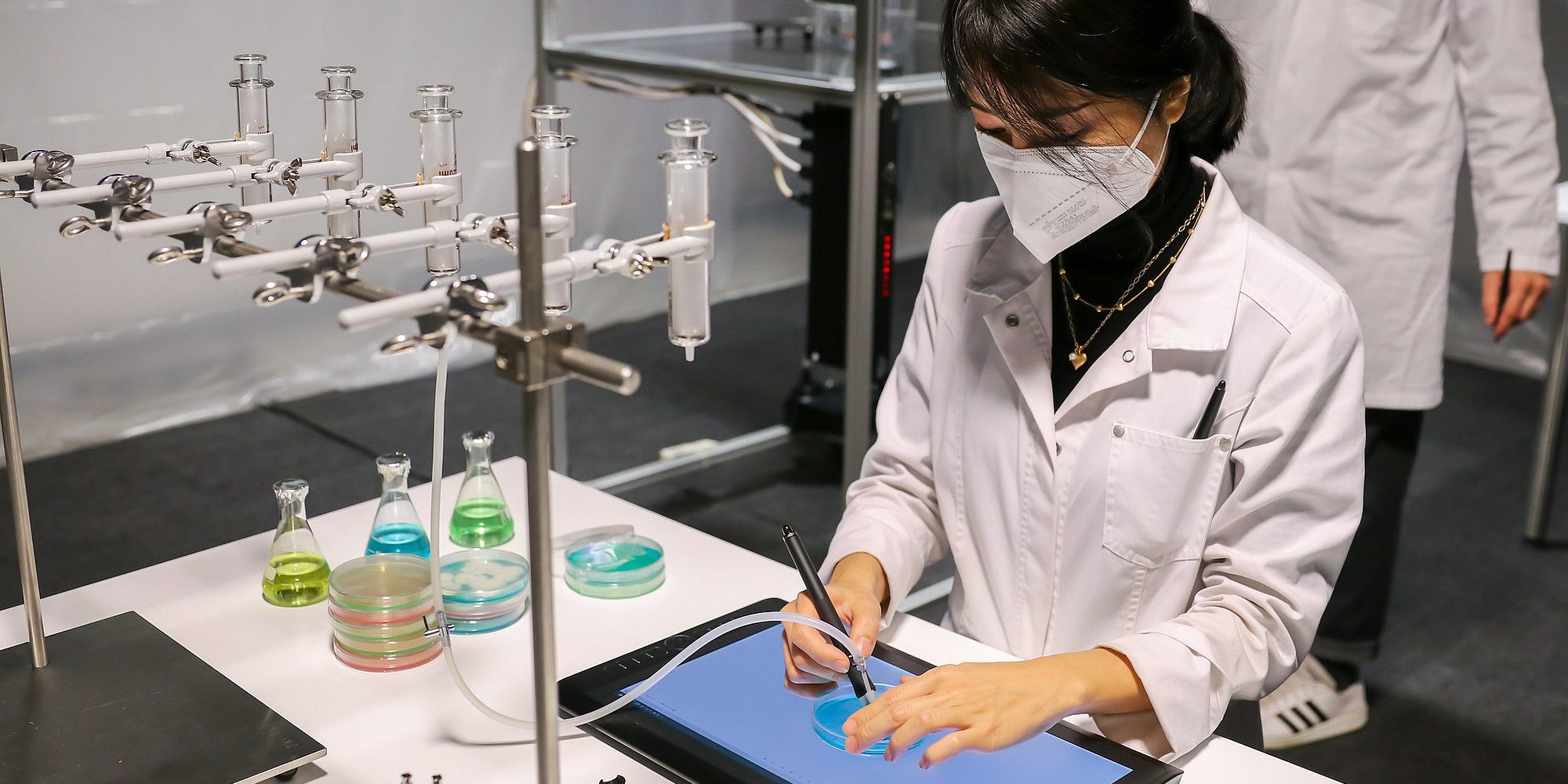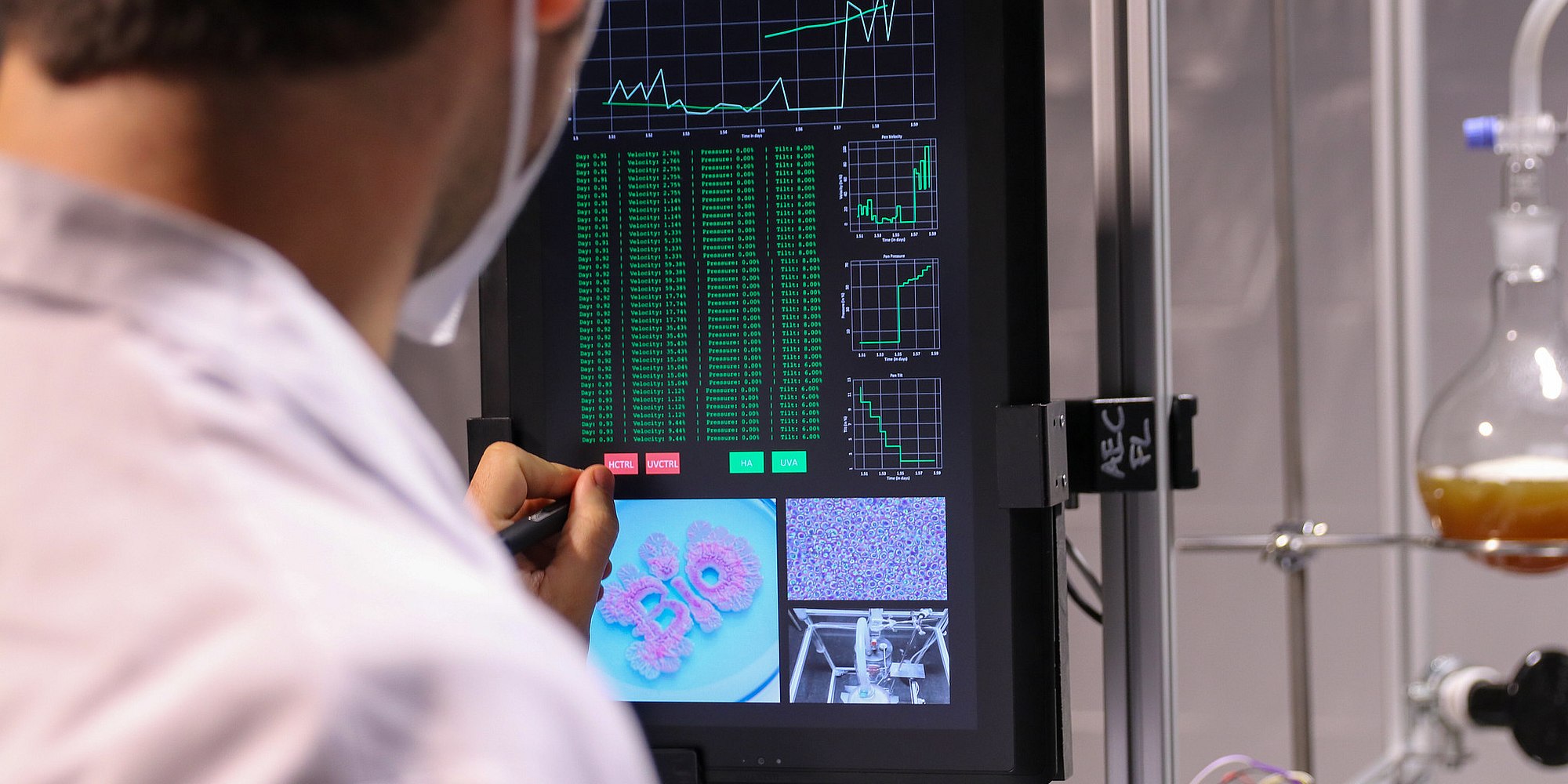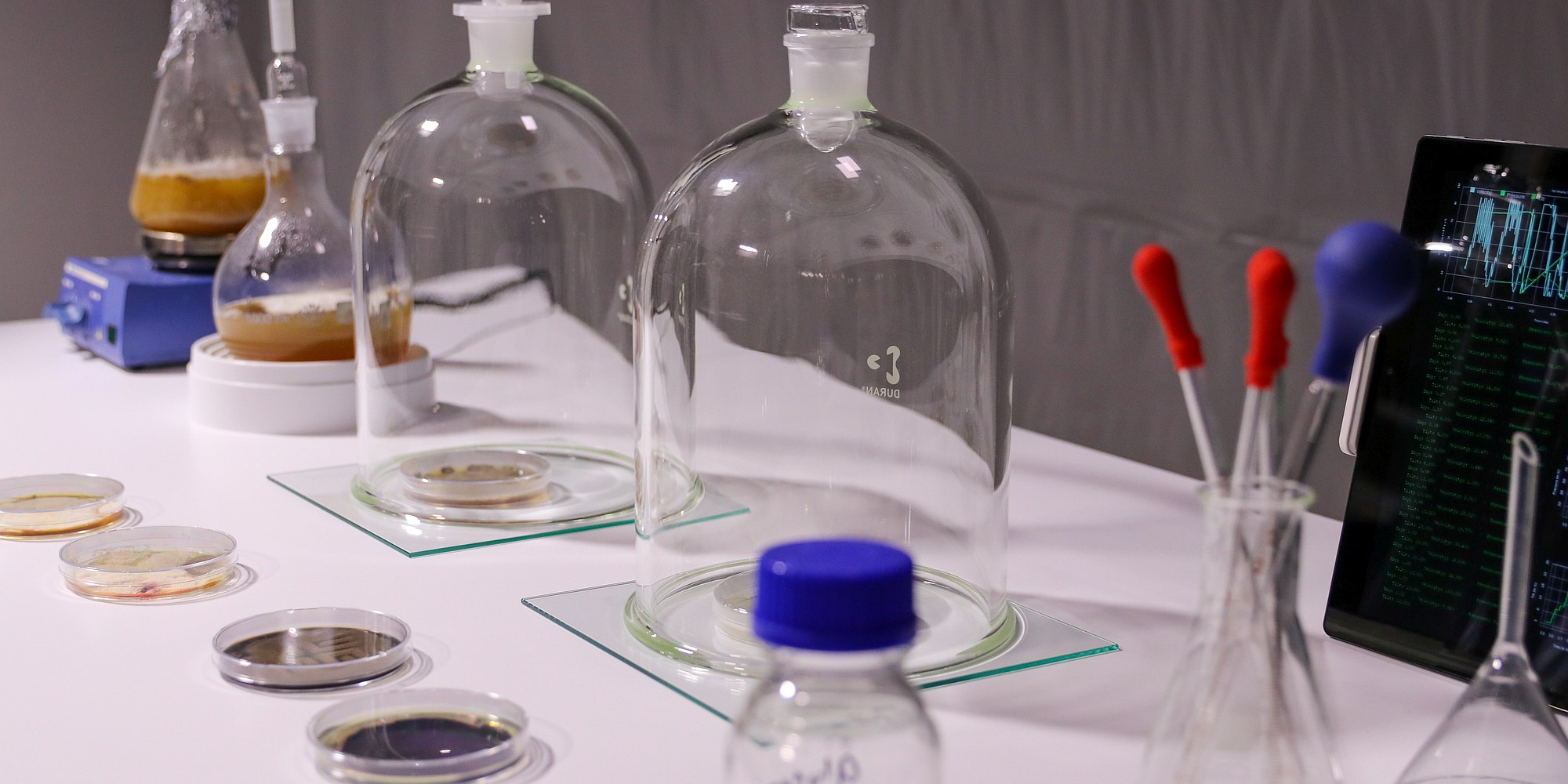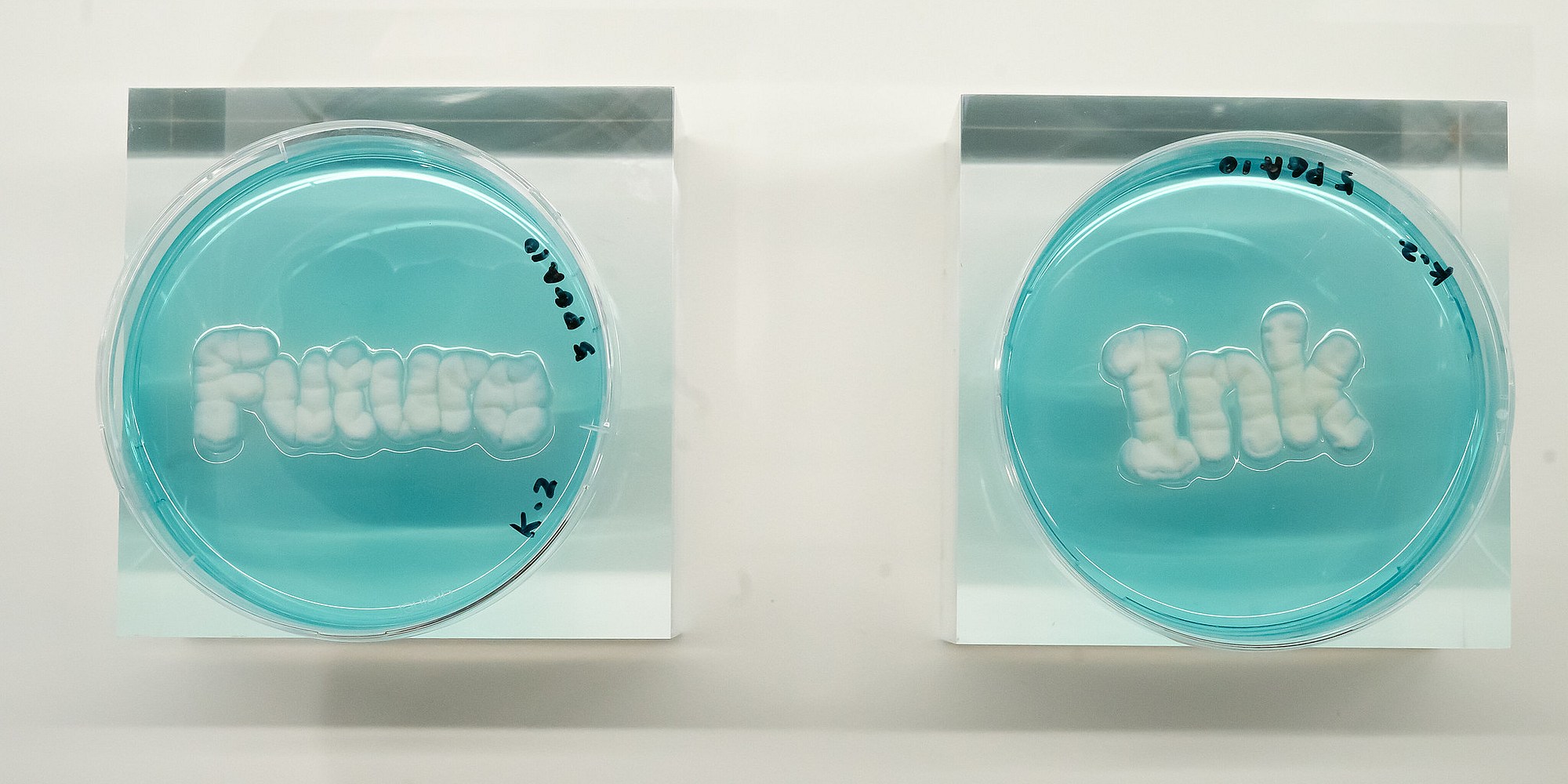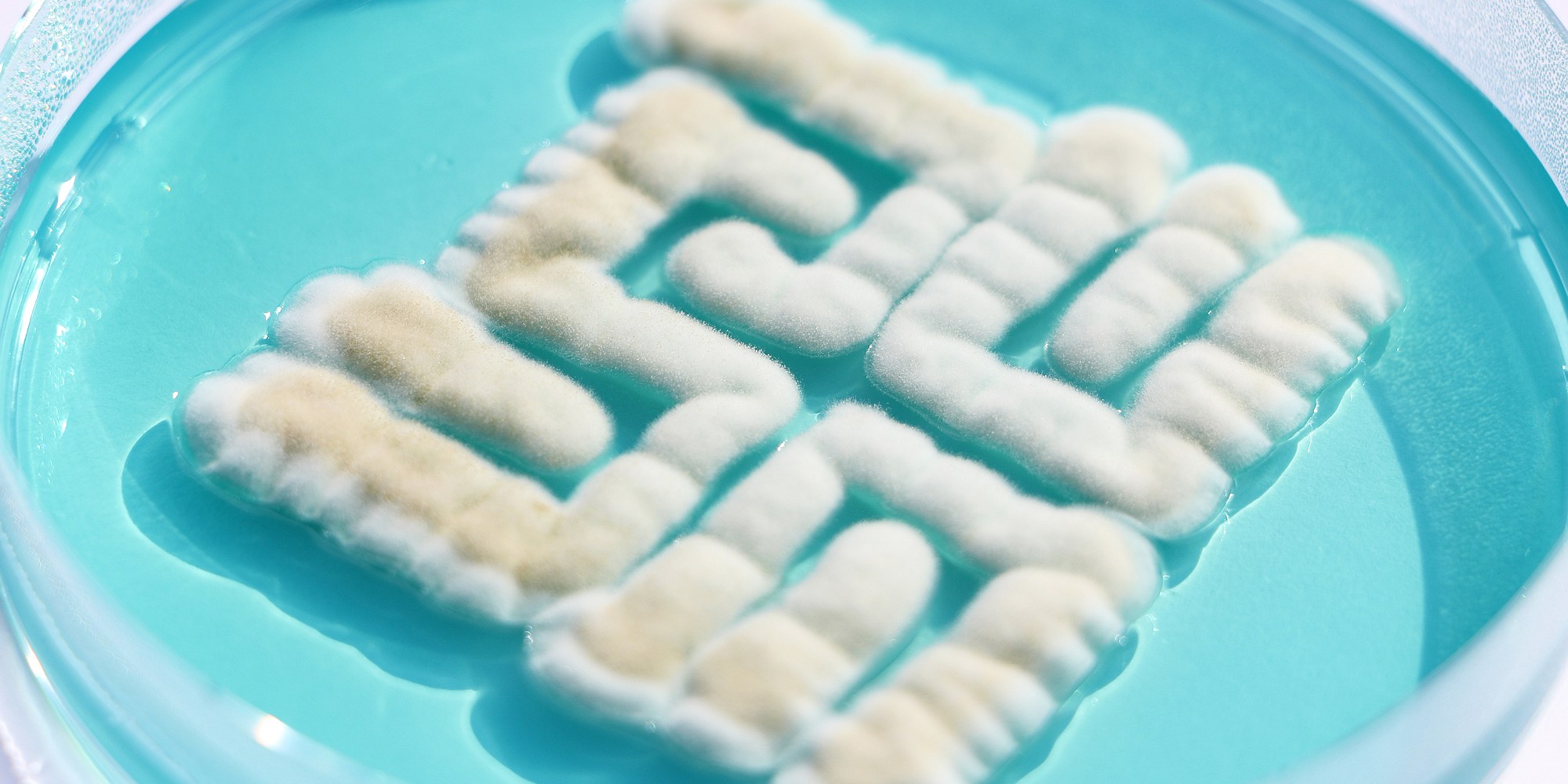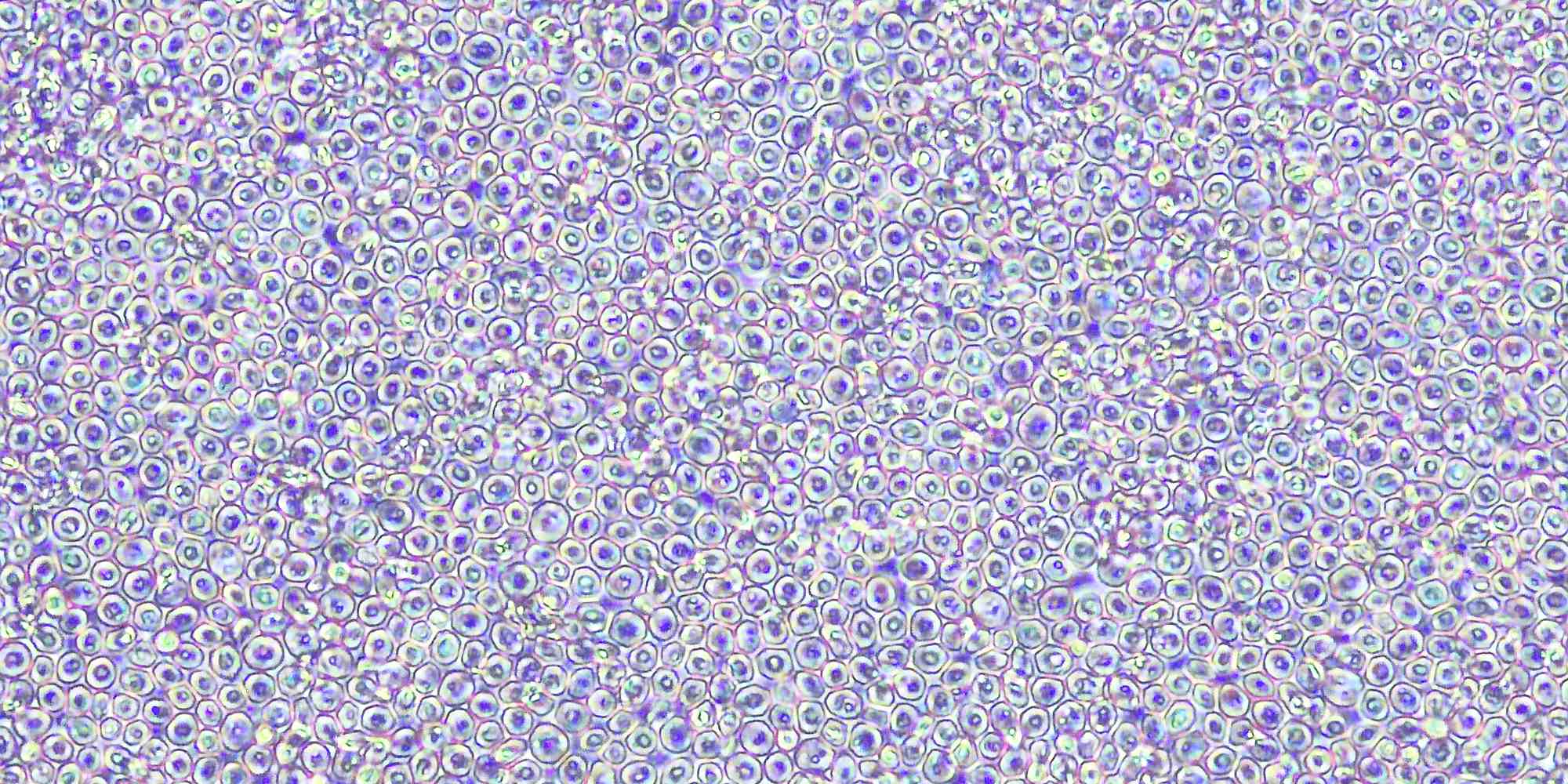In Bio Ink, the Futurelab brought together biotechnology and digital pen tablet technology to create living ink that grows freely beyond human input. With this research, the team explored co-creation with other organisms and nature.
Bio Ink was part of the Ars Electronica Futurelab’s multi-year Future Ink research together with partner Wacom. In several phases, biological inks and living works of art were created that continued to grow independently based on human and digital input.
Inside Futurelab: Bio Ink – The beauty of co-creating with nature
Phase 1
Living ink that grows freely beyond the digital input
In nature, we co-exist and interact with many organisms. Working with them helps us better understand other beings and ourselves. The Bio Ink research went beyond digital and human-centric technologies by exploring the concept of living ink that grows freely, in a creative symbiosis with nature and other organisms.
In the research, biological inks comprised of various microorganisms were created in the bio lab. Using this ink, artists could draw and write with a bio pen on the nutrient agar plate and tablet. At the same time, the bio pen data was digitally extracted for creative analysis and use. The artworks were incubated in a controlled environment to allow the living ink to grow. The microscopic organisms were invisible in the beginning, but they gradually multiplied and formed colonies that are visible to the naked eye, morphing into beautiful patterns beyond our input. Humans and machines can continuously learn from nature in this new ecosystem of creativity.
Dear Future Me – A message to My Future Self
The first prototype of Bio Ink was presented at the Ars Electronica Festival 2021. In the Bio Ink Experience, held at the Ars Electronica Center Bio Lab, visitors created their own biological artworks as messages to their future selves under the theme of “Dear Future Me.” Special programs and workshops were also provided for students and kids. During the experience, the participants discussed what it means to be alive and to create with nature, as well as how humans are currently impacting the planet.
Phase 2
Chemical reaction chamber for creative interaction
In phase 2 of the Bio Ink research, we converted digital pen parameters into biological parameters to interact with the living artwork as it grows. For this new form of creative interaction, the research team built a chemical reaction chamber at the Ars Electronica Futurelab Studio. Parameters captured during the drawing process, such as pen speed, pressure, and tilt, were converted into biological parameters, such as temperature, humidity, and biochemical reactions. The chamber was equipped with sensors and monitoring tools to control heat, humidity, and valves for chemical substances. This allowed automatic interaction by the pen data as well as manual interaction by the artist using an alert system that notified the artist when the data reached the threshold for interaction.
To trigger the biochemical reaction, the team also experimented with various nutrients, chemicals, different wavelengths of lights, and other microorganisms that communicated with the living ink. The research explored a creative collaboration in which the digital drawing, the living drawing, the artist, and other microorganisms are communicating and interacting as the artwork grew and expanded.
Read more about Bio Ink on the Ars Electronica Blog:
- Creative collaboration with microscopic organisms
- Experimental Art with living ink
- Bio Ink – Co-Creation with nature
Credits
Ars Electronica Futurelab: Alexandre Bizri, Samuel Eckl, Horst Hörtner, Hideaki Ogawa, Erwin Reitböck, Raphael Elias Schaumburg-Lippe, Simon Schmid, Yoko Shimizu, Georgios Tsampounaris
Ars Electronica Center: Christoph Kremer, Anastasia Bragina
Wacom Co., Ltd.
